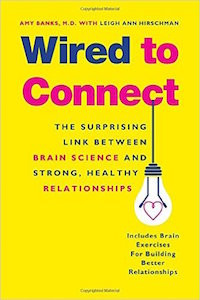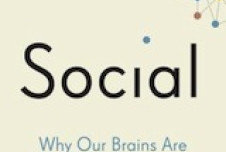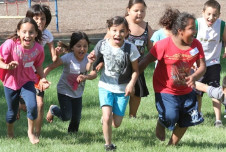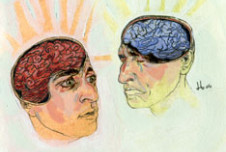“Be independent.”
“Learn to manage on your own.”
“Have a strong sense of self.”
These are values strongly held by Americans and promoted by most mental health professionals.
I first got a tickle of an idea that this might not be the only way to live when I married into an Indian family and spent time in Mumbai. Their consideration of the group could border on the absurd, yet when someone made a major life screw-up, they rallied around and held him close. Kindness in Indian culture can veer toward the sacrificial; one time, when my daughters were splayed out with fever, a stranger bicycled 30 kilometers from the airport into town for medicine. And my husband, children, and I could travel anywhere in India staying only at the homes of friends of friends of friends.
Through my trained psychological lens, I sometimes wondered if these close connections were signs of codependence or enmeshment (considered unhealthy in American psychology); and some did have the downside of being intrusive. Yet they offered joy and provided a safety net we could not fall through. And each time we returned home to the United States, we reentered through a fog of isolation and loneliness.
“Boundaries are overrated,” writes Amy Banks in her book, Wired To Connect: The Surprising Link Between Brain Science and Strong, Healthy Relationships. Banks is a psychiatrist and director of the Jean Baker Miller Training Institute at the Wellesley Centers for Women.
She draws on the new relational neuroscience (sometimes called affective neuroscience) to show how our brains and physiologies function best when we are embedded in a network of caring relationships. By now, research is pretty unequivocal about the long-term physical and mental health benefits of feeling loved. It’s also clear that isolation and exclusion activate the same neural pathways as physical pain.
Therefore, Banks writes, to reach our full potential, we need to be in “growth-fostering” relationships. Quality, not quantity, is what’s important, she implies. The first third of the book lays out the brain science that supports her thesis, but the more interesting section begins with the relational assessment that helps you take stock of the relationships that take up the most time in your life—either in sheer hours or in the mental space you devote to thinking or worrying about them. The simple 20-question inventory (which can also be found on her website) evaluates your relationships for four neural constructs that underlie healthy connections:
- Calm: vagal tone
- Acceptance: dorsal anterior cingulate cortex
- Resonance: mirroring system
- Energy: dopamine
These form the apt acronym C.A.R.E. We need all the help we can in remembering these principles, because not many of us are taught explicitly how to cultivate or maintain healthy relationships—and many are limping along or compensating for wounds we incurred in our formative years.
In the final third of her book, Banks is here to help you unpack the obstacles you might have on your path to achieving the four C.A.R.E. dimensions—including judgments, fears, avoidance, feelings of being belittled or silenced, or a lack of reciprocity (giving more than getting). Feed the nervous system the relational experiences it craves, Banks advises, and starve the nervous system of experiences that get in the way. This might mean, for example, finding more supportive relationships to balance out the unhappy one you have to put up with at work; becoming aware of how often you judge your partner (something that separates rather than connects); practicing specific emotional skills in a safe relationship; or finding more zestful and rewarding activities to rewire your dopamine circuitry toward healthy relationship pursuits and away from dysfunctional outlets.
Making more space for, and devoting more conscious attention to, relationships in our lives is an idea whose time has come. Research in developmental science has shown for decades the seeming paradox that strong attachments best prepare children to launch into the outside world, that the presence of a caring adult can mitigate the damaging effects of some forms of trauma in a child’s body, and that strong social networks can offset myriad life challenges, from parenting to illness to poverty.
As a developmental psychologist, I was initially surprised by Banks’ bald and repeated demand to not count children among the important relationships you assess. What she failed to clarify, but should have, is that her system likely refers to adult relationships of equal power; for example, it would be weird, or impossible, for children to “mirror” some adult feelings. Other kinds of relationships—e.g., with children, the elderly, or someone you provide care for—can also be rewarding, just in a different way.
The opening of the book is a strong critique of the American emphasis on boundaries and separateness, which might draw an unschooled reader to the conclusion that Banks is heading in the direction of doing away with boundaries altogether. Instead, it would be helpful for her to state clearly that boundaries are important but that perhaps we should soften them, move the goal line, and become more sophisticated at managing them in order to have more relationships and enjoy them more often.
In the United States, “success” is often defined in terms of wealth, power, and achievement, not in loving relationships. But the research shows that to live a happy life, emotions and relationships are as important as thinking and cognition.









Comments